How a week at Ballymaloe Cookery School changed me
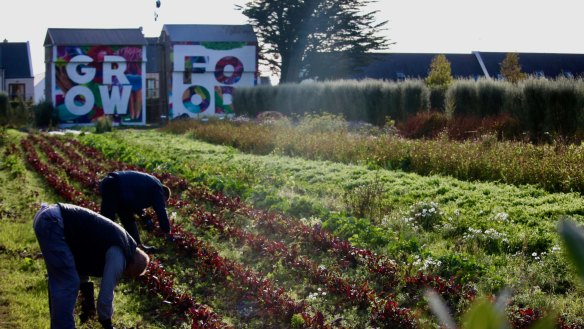
"But you already know how to cook," exclaimed several of my friends on hearing I was off to attend "A Week at Ballymaloe Cookery School, Organic Farm and Gardens" in Shanagarry, Cork, Ireland. True, I'm a reasonably competent home cook but I had been yearning to go to Ballymaloe for years having heard its founder, Darina Allen, spoken of in reverential ways.
There is no other cooking school in the world quite like Ballymaloe. It is an immersive cooking course that has the power to actually change your life. Founded in 1983, Ballymaloe is unique in being the only residential cooking school on a 40-hectare organic farm underpinned by a sustainable paddock-to-plate philosophy. We got up at 6am to bake bread and by afternoon we had our arms shoulder-deep in warm curds.
There is a six-week Sustainable Food Program for those who have bought land and want to run a food-producing farm; and an enticing five-week Summer Cookery Course. Tourists can join half and full-day courses.
But the holy grail is the 12-week Ballymaloe Certificate Course, which takes in 64 students. From this course many go on to become professional caterers and food producers, or open their own cafes. It's also enjoyed by people looking for an enriching, life-altering experience.
I travel to Shanagarry with two food-loving friends, bursting with excitement. On a chilly Sunday afternoon in early April we are shown to our comfortable student accommodation in Pennywort Cottage and given a loaf of warm soda bread.
Where others see weeds, she sees dinner.
Next morning we arrive for breakfast equipped with aprons, knives and blank notebooks. Allen welcomes us enthusiastically and describes the week to come as "gastro boot camp".
It is worth going to Ballymaloe for the breakfast spread alone, decorated with vases of tulips and lit by candelabra. The porridge is a revelation to this reluctant porridge eater, made from Macroom Oatmeal, "stone ground from freshly roasted oats". I learn how to make it (bring one litre of water to the boil, sprinkle in 160 grams of oatmeal, simmer gently over low heat for 20 minutes, stirring every so often to ensure it doesn't stick, throw in a teaspoon of sea salt before serving). We have it with brown sugar, dollops of jersey cream and baked rhubarb alongside; I learn to search for the sweetest, pale bits from the base of the stalk, usually thrown away.
We begin our week with a tour of the muddy, sodden farm, hanging off every word of this charismatic Irish woman. She tells us emphatically that everything she does at the school – and encourages us to do at home – starts with the quality of the soil we grow things in. Allen believes we should all grow something, whether it is in a cut-off plastic bottle or in a raised garden bed in a suburban backyard.
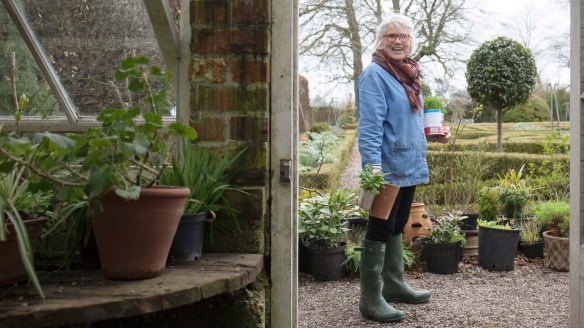
The garden
Allen is a passionate forager and "where others see weeds, she sees dinner". She shows us plants most people would ignore as they are bitter, a quality actually needed in our diet. She extols the ancient herbalists' cure of ingesting four feeds of nettles in spring to cleanse the blood. We gather wild garlic to add to salads, stews and pesto.
We use fresh herbs in every dish. Marjoram is my herbal revelation. One of the teachers describes it as their "desert island herb", adding aromatic flavour to meats, poultry, salads and roasted vegetables. A member of the oregano family, Origanum majorana is the preferred annual variety, grown from seed. I vow to plant some on my kitchen sill.
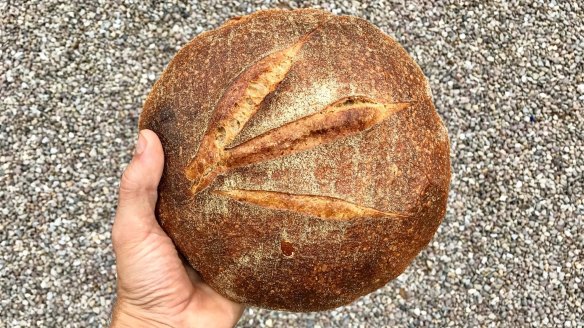
The garden is still in winter mode, the soil is only 7 degrees and needs to be 12 degrees to plant out seedlings.
But the onion beds are thriving! We learn that organic onions are sweeter and that cooking sauteed onions as the foundation of savoury dishes cannot be rushed. Once added to a soup or stew, no amount of boiling will make them softer. (Top tip: if chopped in advance, rinse onion just before cooking as they can become too acidic.)
See you in the bread shed at 6am
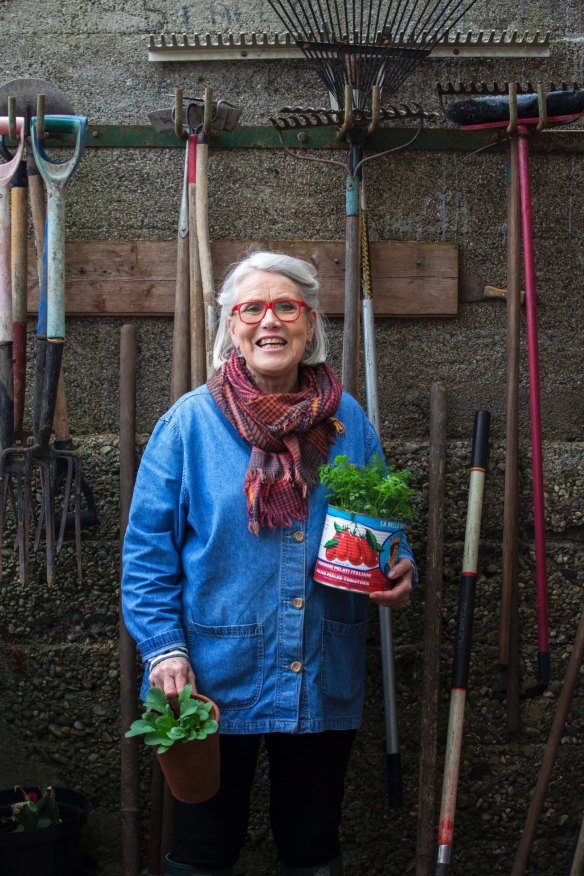
Allen is determined that every student will leave the school able to bake a loaf of bread in the time it takes to drive to the supermarket. During the week we make three breads using different flours and rising agents.
The easiest is probably the Ballymaloe simple white yeast bread, a no-knead loaf made from strong white flour and salt mixed with honey, yeast and warm water (see recipe below). It's crucial to have the ingredients at blood temperature – over 50 degrees will kill the yeast.
Sourdough takes around 48-72 hours and truly is a labour of love. Darina's husband, Tim Allen, is the Ballymaloe sourdough master. He describes it as an "inconsistent medium of nature", always varying due to the temperature, humidity, water, flour, etc. I realise my struggle with making sourdough at home is due to not reactivating the starter (a paste of fermented flour and water used as the rising agent) sufficiently. Tim's starter is kept in a sealed glass jar and fed daily.
Rather than working by hand, Tim uses a stand mixer with the dough hook for mixing and kneading, starting slowly and then turning up the speed. He mixes until the dough comes away from the bowl (about 15 minutes) and then uses a metal scraper to stretch, shape and turn the dough during the bench rest period. Once shaped, the dough is left to cure in the fridge for 48 and up to 96 hours. This gives his bread an outstanding sour flavour along with his mix of wheatgerm, rye, strong white and malted flour.
Waste not want not
The farm and cooking school evolved out of the necessity of turning an inherited, moribund apple orchard into an organic, thriving farm to feed Darina and Tim's four young children. We are generously provided with the most superior produce to cook from – the finest chicken in Ireland (which sell for about $35 each), wild-caught salmon. On this farm, everyone shares in the care that goes into small-batch milking, tending heritage chooks and rearing premium pigs and as a result you get closer to understanding the real costs of food.
Waste is kept to an absolute minimum and we are constantly given common-sense tips for saving resources. This is Irish frugality at its finest. All scraps go in the pot to make a beautiful stock or into the hen bucket. Darina Allen's quick eyes notice what is discarded. I learn that chicken carcasses can be frozen until you have enough time and bones to make a beautiful stock. Same with fish bones.
We are instructed not to peel any vegetables. There is simply no need. We use the very best olive oil but we use it sparingly, poured over vegies skin-and-all (the skin is where the goodness is), which are tossed with our hands and put, skin side down, to roast with plenty of space around them.
Overcoming the terror of filleting a whole fish
There are cooking demonstrations each afternoon and next morning we excitedly go into the kitchen to put it all into practice. The recipes are all for delicious, technique-based home cooking. Things do not get too cheffy but we see over and over the results that come from doing things properly.
We are each given a gutted whole fish to fillet. It's important to have a sharp filleting knife with a flexible blade. First cut around the base of the head, down to the bone. Then with one hand on the fish, slit the skin from head to tail just above the backbone. Keep the knife flat and slide along the bones in long sweeping movements – this action alone reveals the amateurs among us! When you strike the pin bones, press with your thumb to release the flesh off the bones and then tease the knife under the pin bones. Slide the knife under the rib cage and release the fillet. Repeat on the other side. Check for any remaining bones.
Then we hot smoke a wild salmon fillet in a biscuit tin. First we salt the unskinned fillet and leave to air on a rack for 30 minutes, then we dry it with kitchen paper. We sprinkle two tablespoons of applewood sawdust into the base of the tin and place the fish on a rack inside. Set over a hot gas flame until the sawdust starts smouldering and then put on the lid. Reduce the heat and smoke for 10 to 12 minutes. Rest for five minutes before opening the lid. This made a heavenly salad with ruby beetroot, horseradish cream and watercress.
A whole chicken
We have an entire afternoon of chicken dishes with Rory O'Connell (Darina Allen's brother, with whom she started the cooking school) laced with cheeky Irish humour.
The knockout dish is chicken with rosemary and chilli oil (see recipe below) and as soon as we get home to Australia we each run off to buy a flat Le Creuset grill pan. I loved learning this simple test to see if the chook is done: insert a skewer into the meat for a full count of five then touch the inside of your wrist. If you say "ouch", it's cooked. And I am so pleased to finally learn how to sear chicken and meat without it sticking: dry it off thoroughly with paper towel, preheat a pan 'til hot, oil the chicken, and don't – whatever you do – poke, shift or turn the meat until it has had time to seal and caramelise.
Egg heaven
I adored the afternoon of egg cookery with the delightful Rachel Allen (who I am told is Ireland's TV pin-up role model of wholesomeness and natural beauty). Her coffee roulade is my new pav! We make sure not to overwhip egg whites or our meringues will crack and we are not allowed to bang the whisk on the side of the bowl, which will knock out the precious air.
Omelette class means we keep cracking eggs (from the farm's 400 odd chickens) 'til we get it absolutely right. The secret is using clarified butter in a very hot pan and only cooking the eggs for 30 seconds, stirring once in a north-south, east-west fashion.
A boiled egg never tasted so good
On the Friday night we three Aussie girls are kindly invited to Tim and Darina's kitchen table for a simple boiled egg supper. It will be one of the most memorable meals of my life with Ireland's pre-eminent food culture on the table in its purest form: soda and sourdough breads, eggs from heritage hens, butter from Jersey cows and local cheese. We tell our hosts how this week has filled us up on every level. We are inspired and recalibrated. We have learnt new skills and rusty ones have been oiled. This is unlike any other cookery school and turns students into cooks with heart and a conscience. I long to return.
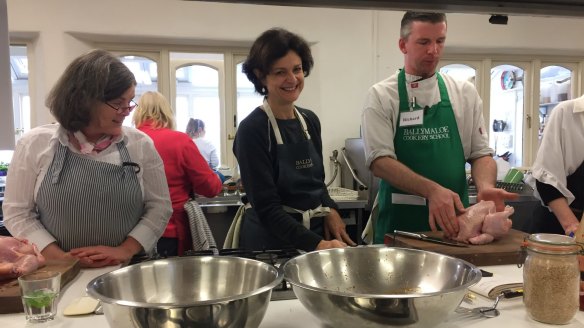
Chicken with rosemary and chilli oil
INGREDIENTS
1 organic chicken, butterflied (you can ask your butcher to do this)
For the marinade
1 tbsp rosemary, chopped
4 cloves garlic, crushed
1 tsp freshly ground black pepper
½ tsp chilli flakes
½ tbsp squeezed lemon juice
4 tbsp extra virgin olive oil
1 tsp sea salt
METHOD
1. Preheat the oven to 170C. Mix the rosemary, garlic, pepper, chilli flakes, lemon juice and extra virgin olive oil in a bowl.
2. Just before cooking, brush the chicken all over with the marinade.
3. Heat a griddle/grill pan to hot. Place chicken skin side down on the grill. Sprinkle with sea salt and sear undisturbed for 10 minutes.
4. Turn the chicken over and, still on the grill pan, put it in the oven for 30-40 minutes, or until cooked through. Serve with mayonnaise and crispy potato wedges.
Serves 4-6
Ballymaloe simple white yeast bread
There is no kneading involved in this recipe and only one rising so it is a brilliant introduction to using yeast. Dried yeast may be used instead of baker's yeast. Follow the same method but use only half the weight given for fresh yeast.
INGREDIENTS
450g strong white flour
1 tsp salt
1 tsp honey
15g fresh yeast
300ml water at blood temperature
METHOD
1. Brush a 900-gram loaf tin with sunflower oil.
2. In a wide bowl, mix the flour with the salt. In a small bowl mix the honey with the water and then add the yeast. Sit the small bowl for a few minutes in a warm place to allow the yeast to start to work. After about four minutes, it will have a creamy, slightly frothy appearance.
3. When ready, stir and pour into the flour and combine to make a wet dough. The mixture should be just too wet to knead.
4. Scoop the mixture into the greased tin. Put the tin in a warm place (perhaps next to the stove or a heater). Cover with a tea towel to prevent a skin forming.
5. Preheat oven to 230C.
6. Just as the dough comes over the top of the tin (about 20 minutes depending on room temperature), remove the tea towel and put it in the oven for 20 minutes. Turn the heat down to 200C for another 40-50 minutes or until it looks nicely browned and sounds hollow when tapped.
7. You can remove the loaf from the tin 10 minutes before the end of cooking and put it back in the oven to crisp all over. Cool on a wire rack.
The best recipes from Australia's leading chefs straight to your inbox.
Sign up